Complete the table for each of these major NTs SolutionNeuro
Solution
Neurotransmitter
Receptor (remember to separate subtypes)
Chief Actions when stimulated
Acetylcholine
Muscarinic and Nicotinic acetyl choline receptors
Muscarinic receptor subtypes
muscarinic acetyl choline receptor M1
muscarinic acetyl choline receptor M2
muscarinic acetyl choline receptor M3
muscarinic acetyl choline receptor M4
muscarinic acetyl choline receptor M5
Nicotinic receptors
muscle type nicotinic receptors
neuronal-type nicotinic receptors (tweleve different subtypes include 210 and 24)
Muscarinic acetyl choline receptors (M1-M5) are involved in the large number of physiological functions including heart rate and force, contraction of smooth muscles, sensory control as well as more sensory control including arousal, memory and learning and release of neurotransmitters. All five are found in CNS, while M1-M4 are found in various tissues.
Nicotinic aceyl choline receptors plays very important role in neurotransmissions like synaptic transmission and paracrine transmission.nACHR mediates excitatory neurotransmission at neuronal junction in the brain and spinal cord. They also commonly involved in the modulation of neurotransmitter release or second messenger systems and calcium signaling.
Catecholamine
1A-adrenoceptor
1B-adrenoceptor
1D-adrenoceptor
2A-adrenoceptor
2B-adrenoceptor
2C-adrenoceptor
1-adrenoceptor
2-adrenoceptor
3-adrenoceptor
Adrenergic receptors have several functions in common when they stimulated. It causes the vasoconstriction in many blood vessels including skin, GI tract, kidney and brain.
The alpha2A receptor stimulates the release of glucagon and inhibits the insulin from pancreas
The alpha B1 receptor increases the cardiac output by increasing heart rate; renin secretion in kidney and ghrelin secretion in stomach
The alpha B2 receptor participates in smooth muscle relaxation, lipolysis in adiposse tissue and anabolism in skeletal muscle etc.,
Glutamate
Two types Metabotropic and Ionotropic receptors
Metabotropic receptors
mGlu1 receptor
mGlu2 receptor
mGlu3 receptor
mGlu4 receptor
mGlu5 receptor
mGlu6 receptor
mGlu7 receptor
mGlu8 receptor
Ionotropic receptors
AMPA receptors (subtypes: GluA1, GluA2, GluA3 and GluA4)
Kainate receptors (subtypes: GluK1, GluK2, GluK3, GluK4 and Gluk5)
NMDA receptors (subtypes: GluN1, GluN2A, GluN2B, GluN2C, GluN2D, GluN3A, GluN3B)
Delta receptors (subtypes: GluD1 and GluD2)
mGluRs have a variety of functions in the central and peripheral nervous system. They are involved in learning, memory, anxiety and perception of pain.
mGluRs also involved in neurotransmission, modulatin of post-synaptic signals and regulates the NMDA receptor activity
Ionotropic glutamate receptors are ligand-gated ion channels that are activated by the neurotransmitter glutamate. They mediate the majority of excitatory synaptic transmission throughout the central nervous system and are key players in synaptic plasticity, which is important for learning and memory
Aspartate
NMDA receptors (subtypes: GluN1, GluN2A, GluN2B, GluN2C, GluN2D, GluN3A, GluN3B)
NMDA receptor stimulates the synaptic transmission in the CNS which is important for behaviarol responses
GABA
GABAA receptor
GABAC receptor
GABAB receptor (Subtypes: GABAB1 and GABAB2)
GABA recetors contributes to motor control, cognitive function, vision and many other cortical functions. They also regulates anxiety
Serotonin
5-HT1A receptor
5-HT1B receptor
5-HT1D receptor
5-ht1e receptor
5-HT1F receptor
5-HT2A receptor
5-HT2B receptor
5-HT2C receptor
5-HT4 receptor
5-ht5a receptor
5-ht5b receptor
5-HT6 receptor
5-HT7 receptor
Serotonin activates the cAMP to produce an excitatory and inhibitory resonse.
Serotonin receptors also regulates the cognitive functions such as addiction, aggression, mood, memory , impulsivity, respiration, sexual behavior, apetite, blood pressure, heart rate, cardiovascular activity, thermoreuglation, vasoconstriction and many other functions
Neuropeptides
NPFF1 receptor
NPFF2 receptor
NPS receptor
NPBW1 receptor
NPBW2 receptor
NPY1 receptor
NPY2 receptor
NPY4 receptor
NPY5 receptor
NPY6 receptor
Neuropeptides are short-chain polypeptides acts as neurotransmitters and gasotransmitters. They influence the activity of brain and body through neuronal signaling.
They involved in the wide range of functions that include learning and memory, analgesia, reproduction, metabolism and social behavior.
| Neurotransmitter | Receptor (remember to separate subtypes) | Chief Actions when stimulated | |
| Acetylcholine | Muscarinic and Nicotinic acetyl choline receptors Muscarinic receptor subtypes muscarinic acetyl choline receptor M1 muscarinic acetyl choline receptor M2 muscarinic acetyl choline receptor M3 muscarinic acetyl choline receptor M4 muscarinic acetyl choline receptor M5 Nicotinic receptors muscle type nicotinic receptors neuronal-type nicotinic receptors (tweleve different subtypes include 210 and 24) | Muscarinic acetyl choline receptors (M1-M5) are involved in the large number of physiological functions including heart rate and force, contraction of smooth muscles, sensory control as well as more sensory control including arousal, memory and learning and release of neurotransmitters. All five are found in CNS, while M1-M4 are found in various tissues. Nicotinic aceyl choline receptors plays very important role in neurotransmissions like synaptic transmission and paracrine transmission.nACHR mediates excitatory neurotransmission at neuronal junction in the brain and spinal cord. They also commonly involved in the modulation of neurotransmitter release or second messenger systems and calcium signaling. | |
| Catecholamine | 1A-adrenoceptor 1B-adrenoceptor 1D-adrenoceptor 2A-adrenoceptor 2B-adrenoceptor 2C-adrenoceptor 1-adrenoceptor 2-adrenoceptor 3-adrenoceptor | Adrenergic receptors have several functions in common when they stimulated. It causes the vasoconstriction in many blood vessels including skin, GI tract, kidney and brain. The alpha2A receptor stimulates the release of glucagon and inhibits the insulin from pancreas The alpha B1 receptor increases the cardiac output by increasing heart rate; renin secretion in kidney and ghrelin secretion in stomach The alpha B2 receptor participates in smooth muscle relaxation, lipolysis in adiposse tissue and anabolism in skeletal muscle etc., | |
| Glutamate | Two types Metabotropic and Ionotropic receptors Metabotropic receptors mGlu1 receptor mGlu2 receptor mGlu3 receptor mGlu4 receptor mGlu5 receptor mGlu6 receptor mGlu7 receptor mGlu8 receptor Ionotropic receptors AMPA receptors (subtypes: GluA1, GluA2, GluA3 and GluA4) Kainate receptors (subtypes: GluK1, GluK2, GluK3, GluK4 and Gluk5) NMDA receptors (subtypes: GluN1, GluN2A, GluN2B, GluN2C, GluN2D, GluN3A, GluN3B) Delta receptors (subtypes: GluD1 and GluD2) | mGluRs have a variety of functions in the central and peripheral nervous system. They are involved in learning, memory, anxiety and perception of pain. mGluRs also involved in neurotransmission, modulatin of post-synaptic signals and regulates the NMDA receptor activity Ionotropic glutamate receptors are ligand-gated ion channels that are activated by the neurotransmitter glutamate. They mediate the majority of excitatory synaptic transmission throughout the central nervous system and are key players in synaptic plasticity, which is important for learning and memory | |
| Aspartate | NMDA receptors (subtypes: GluN1, GluN2A, GluN2B, GluN2C, GluN2D, GluN3A, GluN3B) | NMDA receptor stimulates the synaptic transmission in the CNS which is important for behaviarol responses | |
| GABA | GABAA receptor GABAC receptor GABAB receptor (Subtypes: GABAB1 and GABAB2) | GABA recetors contributes to motor control, cognitive function, vision and many other cortical functions. They also regulates anxiety | |
| Serotonin | 5-HT1A receptor 5-HT1B receptor 5-HT1D receptor 5-ht1e receptor 5-HT1F receptor 5-HT2A receptor 5-HT2B receptor 5-HT2C receptor 5-HT4 receptor 5-ht5a receptor 5-ht5b receptor 5-HT6 receptor 5-HT7 receptor | Serotonin activates the cAMP to produce an excitatory and inhibitory resonse. Serotonin receptors also regulates the cognitive functions such as addiction, aggression, mood, memory , impulsivity, respiration, sexual behavior, apetite, blood pressure, heart rate, cardiovascular activity, thermoreuglation, vasoconstriction and many other functions | |
| Neuropeptides | NPFF1 receptor NPFF2 receptor NPS receptor NPBW1 receptor NPBW2 receptor NPY1 receptor NPY2 receptor NPY4 receptor NPY5 receptor NPY6 receptor | Neuropeptides are short-chain polypeptides acts as neurotransmitters and gasotransmitters. They influence the activity of brain and body through neuronal signaling. They involved in the wide range of functions that include learning and memory, analgesia, reproduction, metabolism and social behavior. |
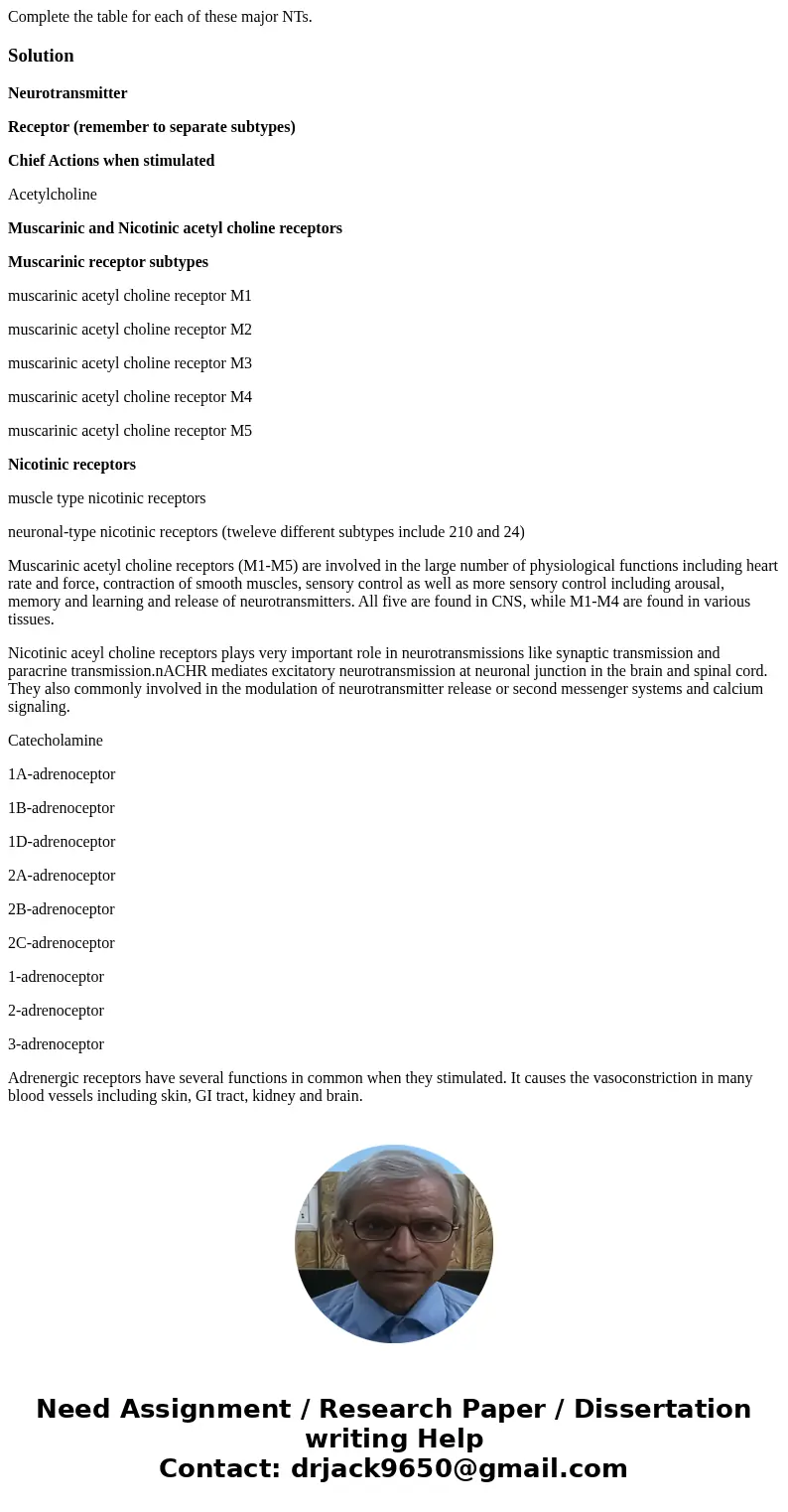
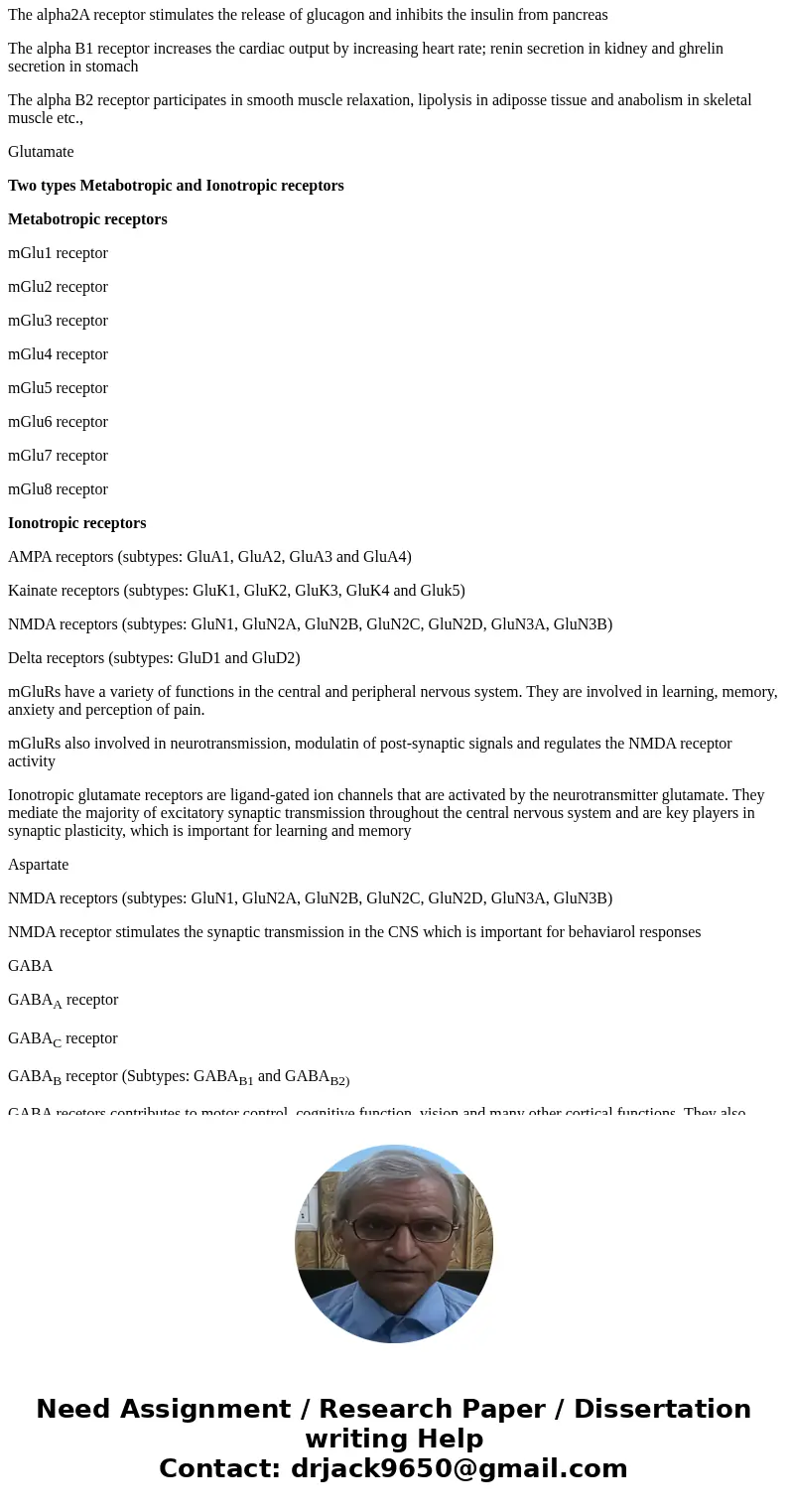
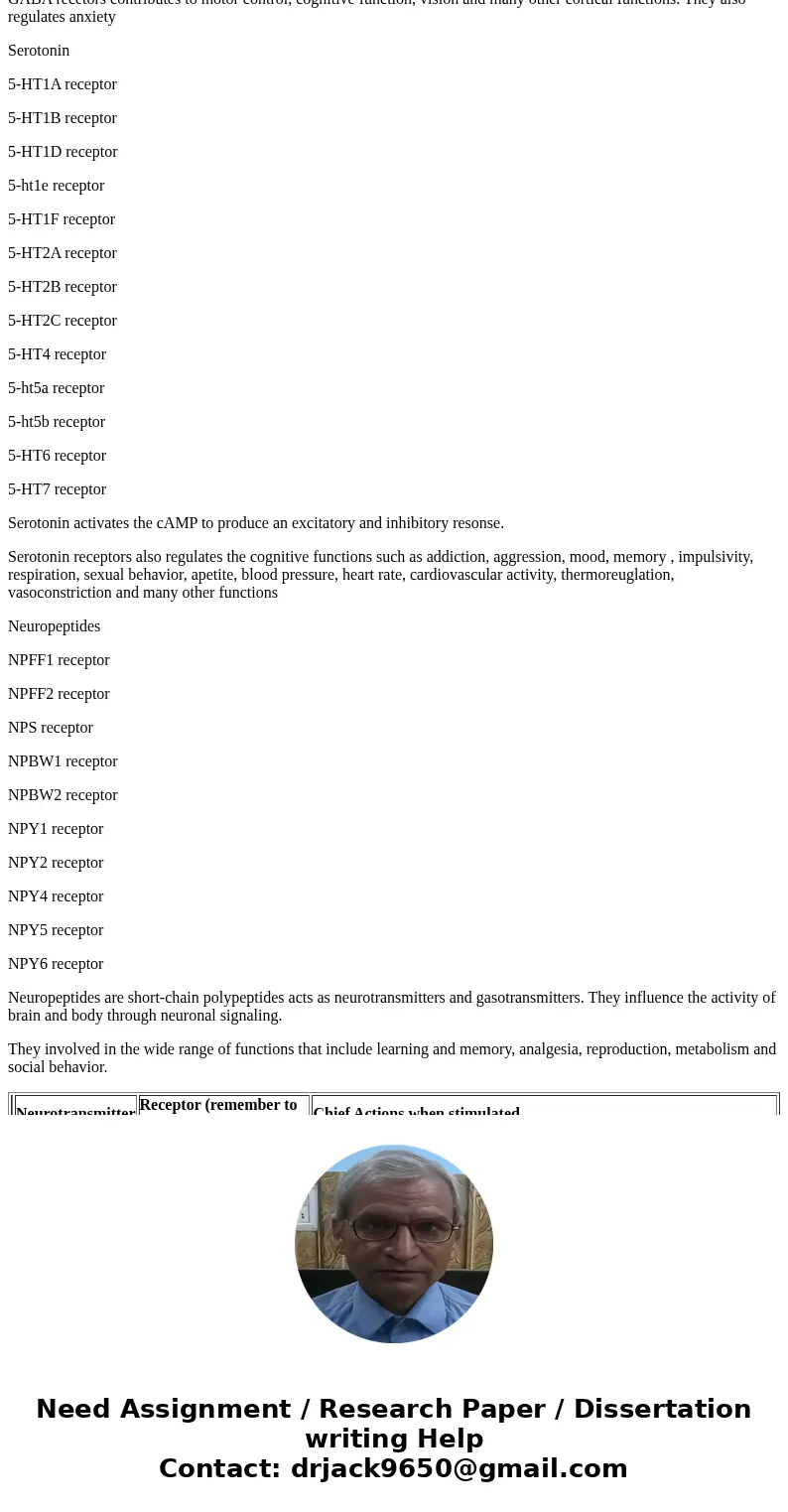
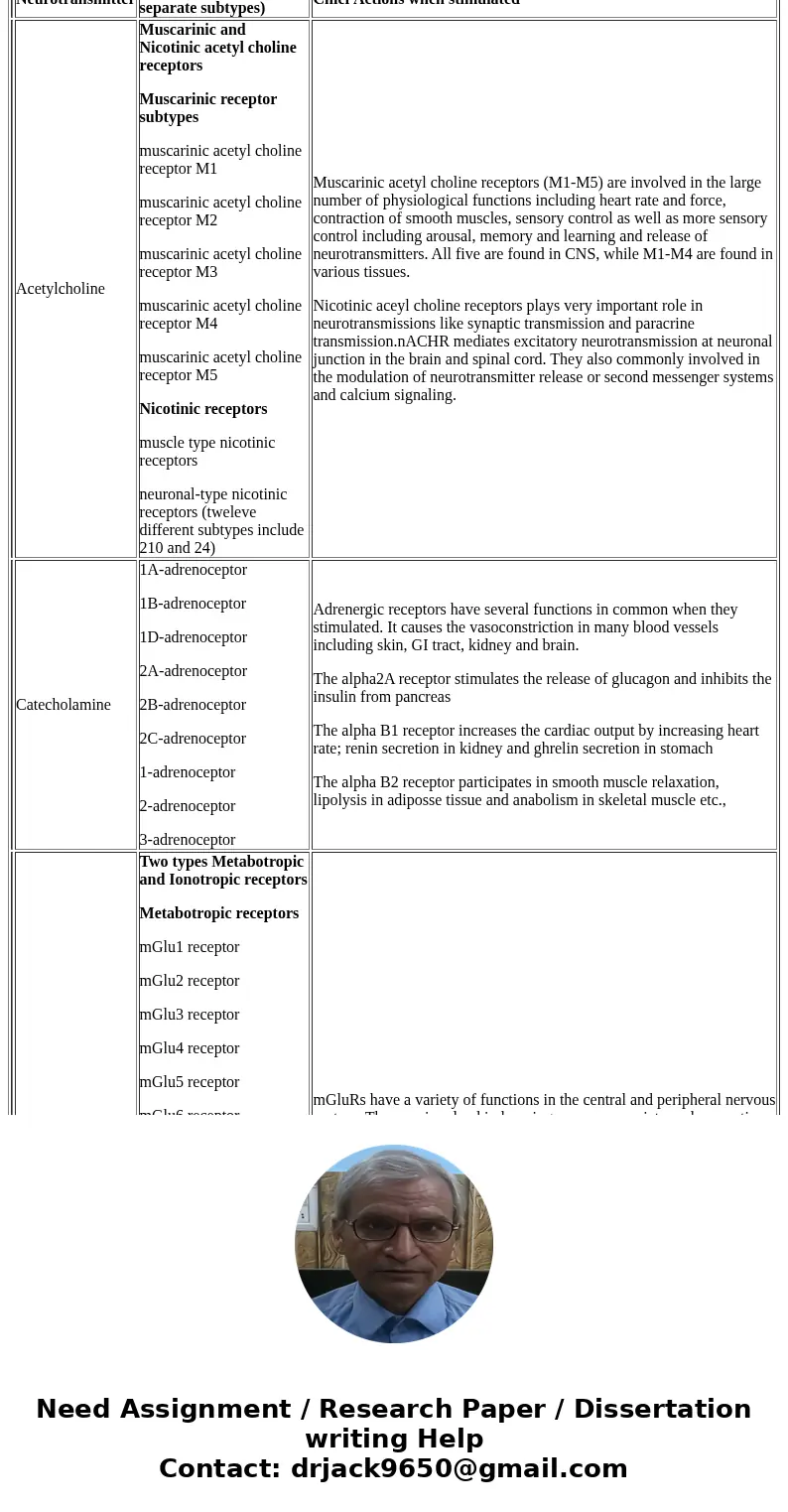
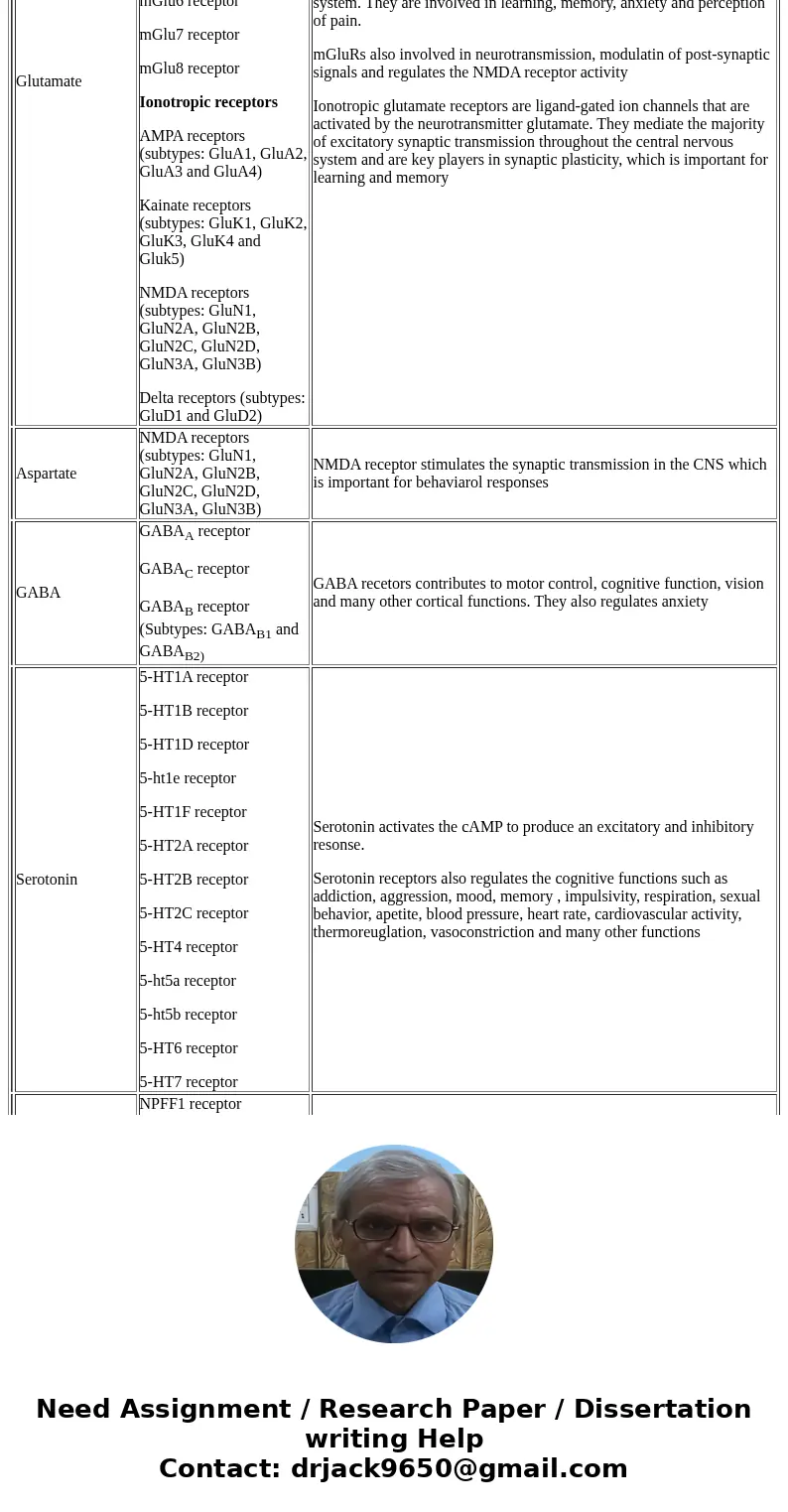

 Homework Sourse
Homework Sourse